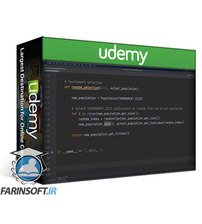در حال حاضر محصولی در سبد خرید شما وجود ندارد.

Graph Algorithms, Genetic Algorithms, Simulated Annealing, Swarm Intelligence, Heuristics, Minimax and Meta-Heuristics
در این روش نیاز به افزودن محصول به سبد خرید و تکمیل اطلاعات نیست و شما پس از وارد کردن ایمیل خود و طی کردن مراحل پرداخت لینک های دریافت محصولات را در ایمیل خود دریافت خواهید کرد.


دوره کامل SQL و MySQL – از مبتدی تا متخصص

Public Key Infrastructure (PKI) with OpenSSL (RSA and ECC)
-main-resized.jpg)
الگوریتم و ساختمان داده ها در زبان Java + سوالات آزمون استخدام جاوا

الگوریتم و ساختمان داده های پیشرفته در زبان Python

فناوری Blockchain و Cryptocurrency را در جاوا بیاموزید

آشنایی با مجموعه ها ، ژنریک ها و Reflection ها در جاوا

Java Programming: Step by Step from A to Z

یادگیری ماشینی و یادگیری عمیق ( Deep Learning )

AI و متا اکتوری (بهینه سازی ترکیبی) پایتون